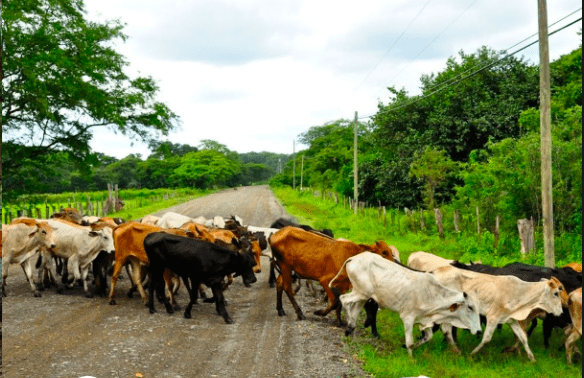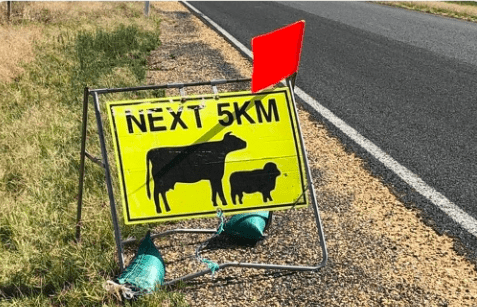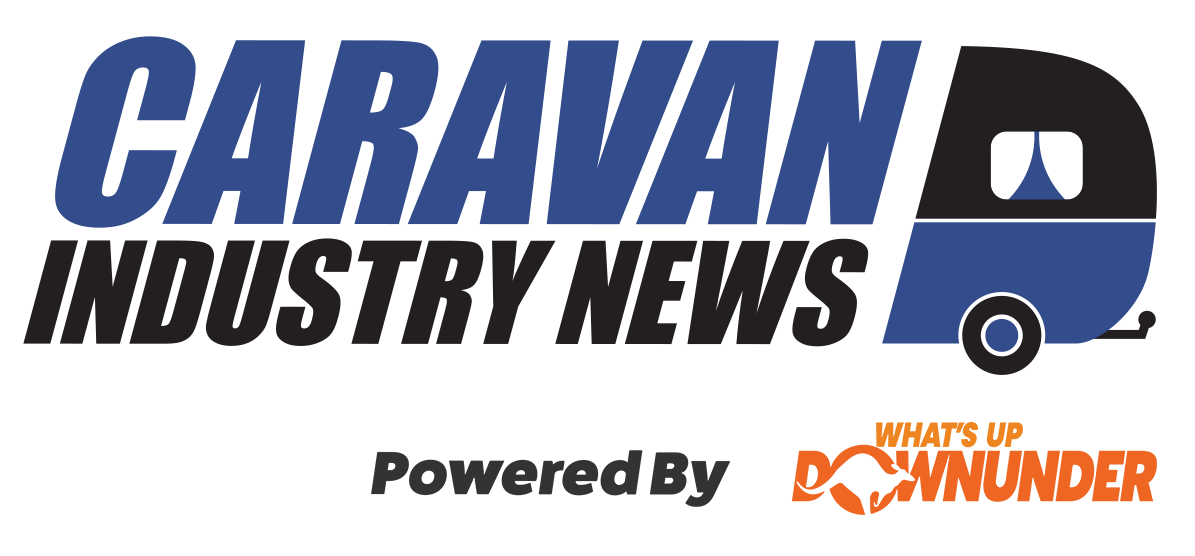Cattle on the Road? Here’s how to handle it

Encountering cattle and stock crossing signs in your travels? Here’s how to handle it
Many years ago I was part of a school group that was taken to a dairy farm to learn what a dairy farmer did and how to milk a cow. Having to get up at the crack of dawn to milk a cow was not my cup of tea (with or without milk) but there was a strict rule. No milk the cow, no breakfast! The daily life of a dairy farmer is not easy.
In many cases prior to milking, cows have to be moved from paddocks to milking sheds, and, in some cases this means they have to cross country roads. It is here, there is an obligation on both farmer and motorist. The farmer by law is obliged to place signs and in some cases red flags on roads to warn motorists of stock crossing.
Stock signs

‘Give Way to Stock’ signs are typically displayed 300m before a livestock crossing, but this can vary. When you see one, you must slow down and allow the animals to cross before continuing on your way. When a Stop Sign is displayed at a stock crossing, you need to come to a complete halt and not start driving again until all the animals have completed their crossing. Both of these stock-related road signs are legally enforceable, so make sure you abide by them or you may receive a fine.
Always slow down and be prepared to stop when approaching or overtaking animals. If a person in charge of animals gives a signal to slow down or stop, you must obey it. Avoid using your horn if animals are in front of you, as it might frighten them.
Driver safety
Cattle crossing in close proximity to public roads often leads to cow manure and mud being deposited on roads. This may create unsafe road conditions especially in wet weather with vehicles losing traction on surfaces made slippery by the fresh manure.
My final piece of advice is that if you have accumulated any of this on your van or car, wash it off as soon as you can. When dry this is a very difficult task.
Enjoy your milk with coffee!
